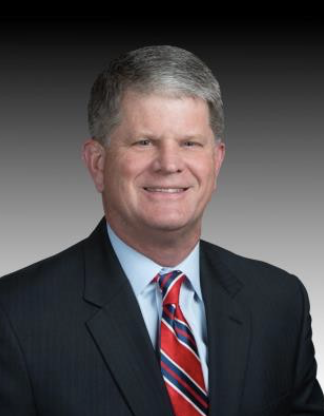 By Brad Bowers
By Brad Bowers
Brad serves as chairman of the Holston Foundation’s Investment Committee, is a long- time member of the Holston Foundation’s Board of Directors and is President of Patriot Investment. Brad is a member of Concord UMC in Knoxville, TN.
In just five weeks from mid-February to mid-March 2020, the “COVID-19 crash” really did a number on the financial markets. The S&P 500 was down almost 35%, the Dow Jones plunged 38%, and the Nasdaq took a 40% dive. In the investment world, the sky was “literally falling.” This pandemic’s longer-term effects on the global economy remain uncertain as negative data continues to pour in.
In spite of all the bad news, through May 22, the Holston Foundation’s Balanced Growth Fund was down only 4.41%. How did this happen? The Foundation utilizes and follows some of the most basic and fundamental investment approaches.
The Foundation’s guiding principle is a formal document called an IPS or Investment Policy Statement. This dictates to our investment committee sound and prudent investment strategies, systems, and processes to follow. It provides the structure and discipline for the Holston Foundation’s investment portfolios.
Three Pillars of Fundamentally Sound Investing
When it comes to investing in uncertain times, how one invests is just as important as what one invests in. In other words, how you allocate assets, diversify a portfolio, and manage risks can sometimes be more important than the assets one chooses.
No one can ever see a market downturn in advance, so it makes sense to always rely on a few simple, practical, and fundamentally sound rules. The Holston Foundation follows these three key investment principles when managing our client’s funds. These fundamentals and the IPS give us the discipline to provide very good, risk- adjusted returns for the institutions and churches we serve. They are:
1. Diversify or “Don’t Put All Your Eggs in One Basket.”
In a nutshell, this is what diversification is all about. When the market turns down, the various parts that make up the broader market—from industries and sectors to individual companies—may react differently. In this most recent downturn, companies like Zoom, Netflix, and Amazon did very well.
Others, such as airlines and cruise ship companies, experienced sharp declines: This points to the idea that various individual components of the broader market may behave differently in relation to one another depending on market conditions.
Diversification is about selecting assets that don’t move in the same direction when negative market conditions occur. It means spreading risk across different types of assets and avoiding the infamous risk of placing all of your eggs in one basket.
The Holston Foundation takes this diversification component even one step further and utilizes extremely low- cost index funds. Rather than owning individual stocks or companies, these funds literally own thousands of companies. These index funds, which are used by the Foundation, are the same types of investments that Warren Buffett, arguably the greatest investor of all time, recommends.
2. Allocate Your Assets Strategically
Asset allocation refers to the percentages of your total portfolio holdings that you place into stocks, bonds, and cash. Asset allocation may be the most fundamental, strategic, and important part of the investment process. The Holston Foundation’s Balanced Growth Fund invests in a classic 60/40 allocation. That means that 60% of the portfolio is invested in more growth-oriented stock investments, and 40% is invested in more conservative bond investments. There is a reason most foundations and endowments use this allocation: because, over time, it provides a wonderful, risk-adjusted return.
3. Invest for the Long Term
Over the last century, the Standard & Poor’s 500 (S&P 500) has averaged over 10% per year. The S&P 500 index, which is comprised of about 500 of America’s largest publicly traded companies, is considered the benchmark measure for annual returns.
The problem is that these returns very rarely are up exactly 10% each year. For example, this index was up over 33.07% in 2019 and is now down 9% for 2020. Historically, an investment in an S&P 500 fund has been up 70% of the time. This fund, the S&P 500 Index, is one of the core holdings in the Foundation’s equity accounts.
Although no one knows when the market will recover, we do know that it will. Wayne Gretzky, the greatest hockey player, used to say, “A good hockey player plays where the puck is. A great player plays where the puck is going to be.” No one knows when this will end or when the market recovers, but it will most certainly recover. There’s no debating that! Imagine where the market (or puck) will be in 1, 3, or 5 years. I have no doubt, nor do folks like Buffett or other great investors, that the market will be significantly higher. Time and patience are an investor’s best friend.
The Bottom Line
The Foundation’s flagship portfolio, the Balanced Growth Fund, as well as all our investment accounts, are well- positioned to provide wonderful, risk-adjusted returns over time. If you’d like to know more about any of the investment options that the Foundation offers, please contact Paul Bowman.
